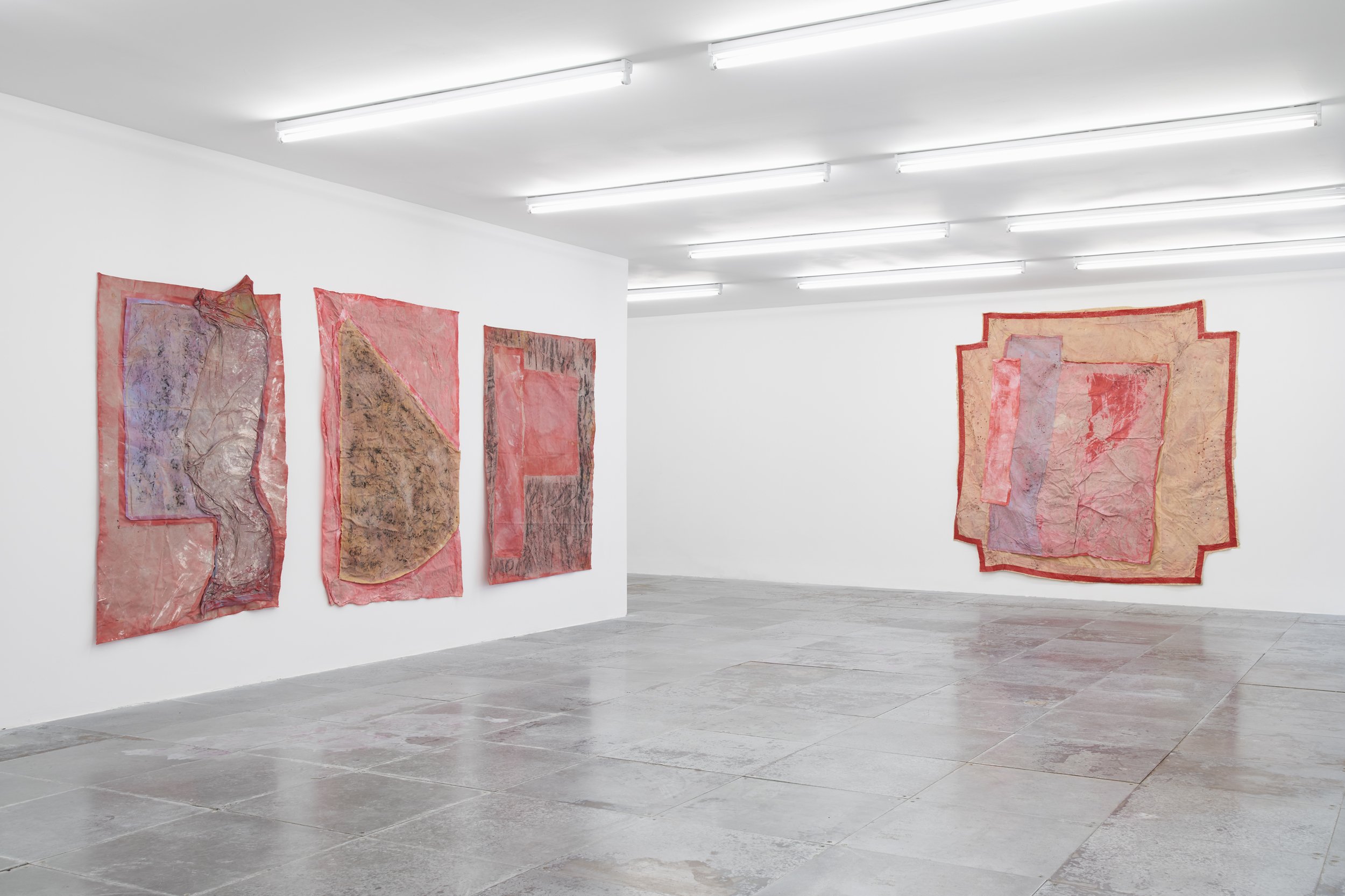
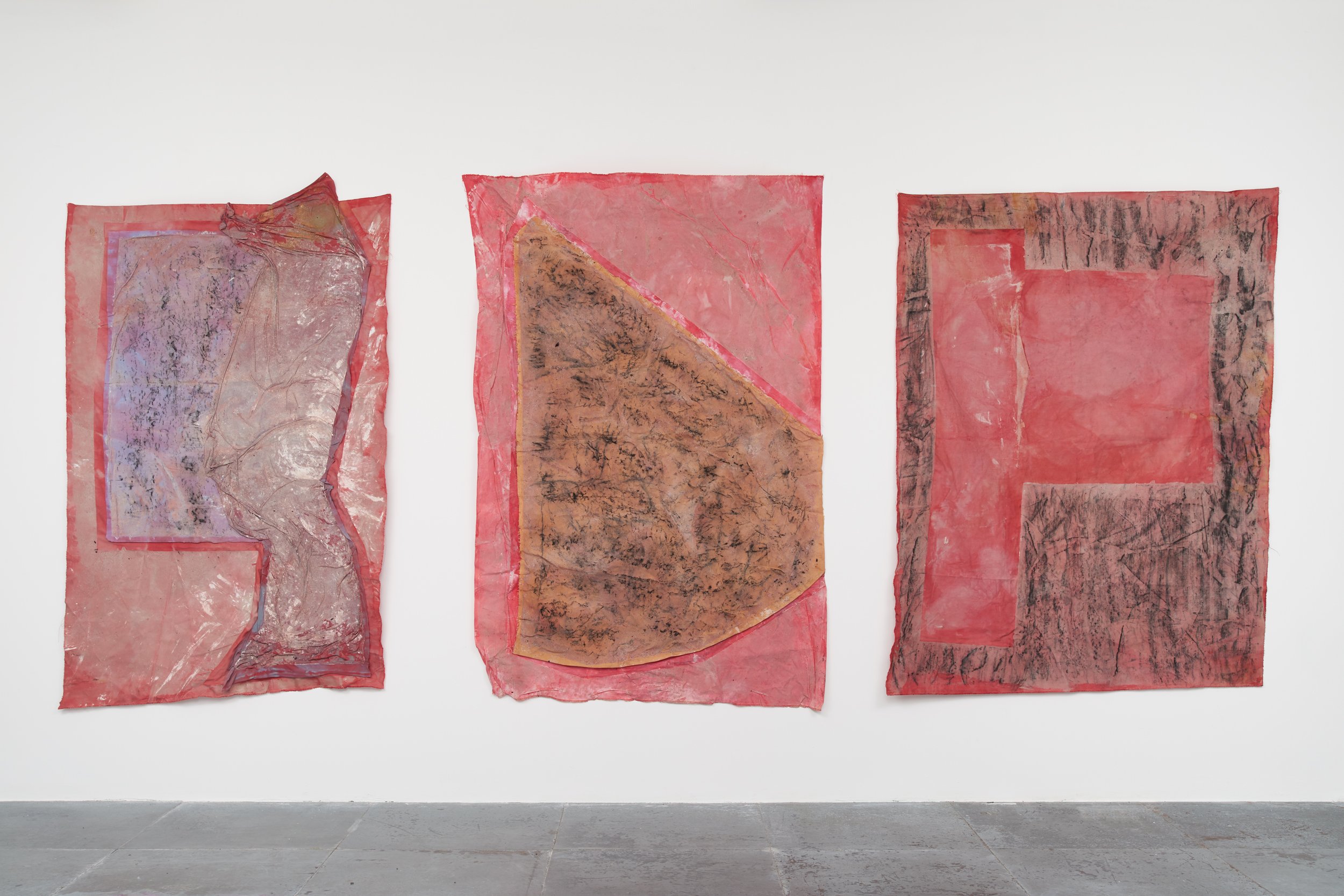
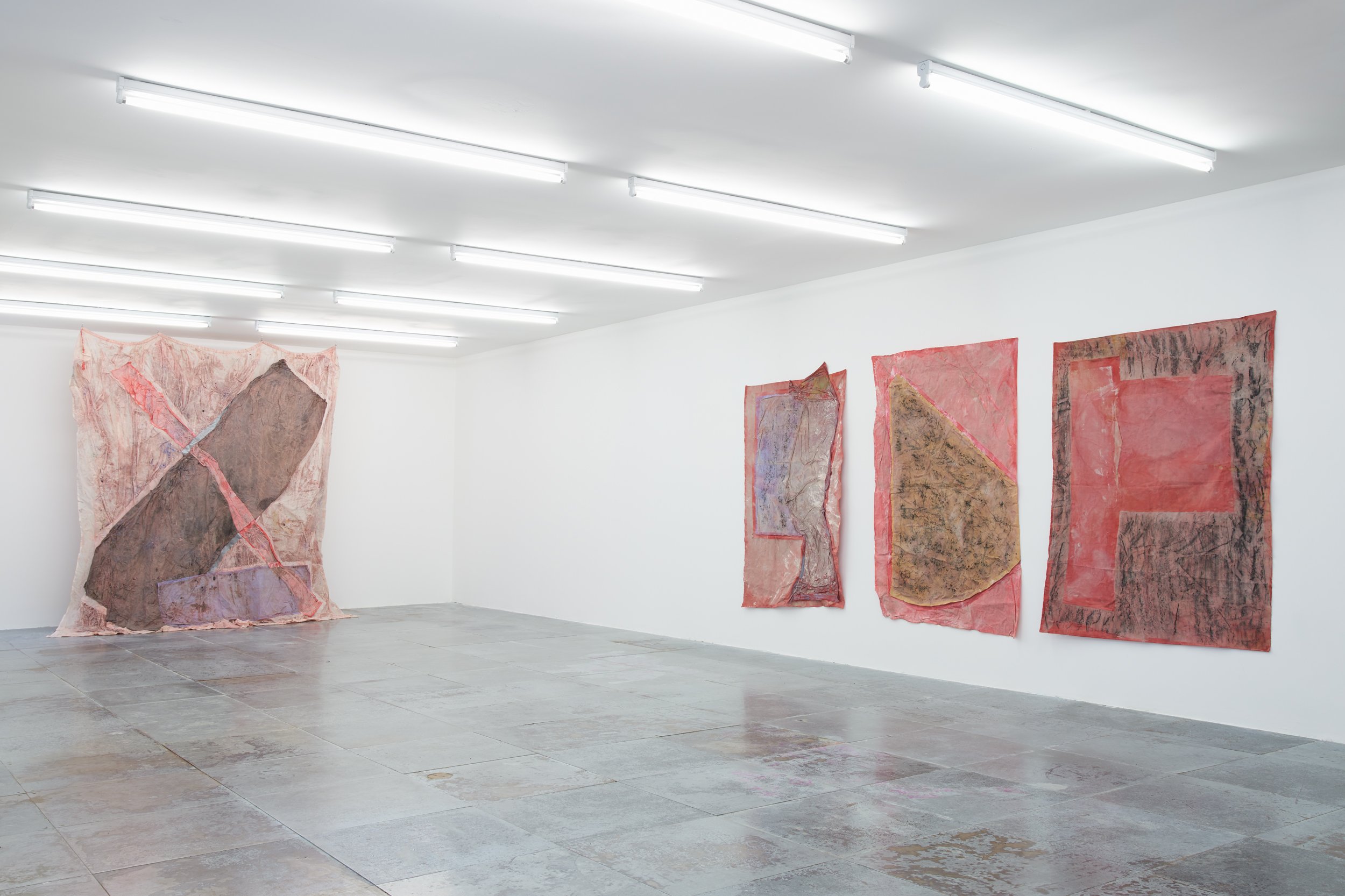

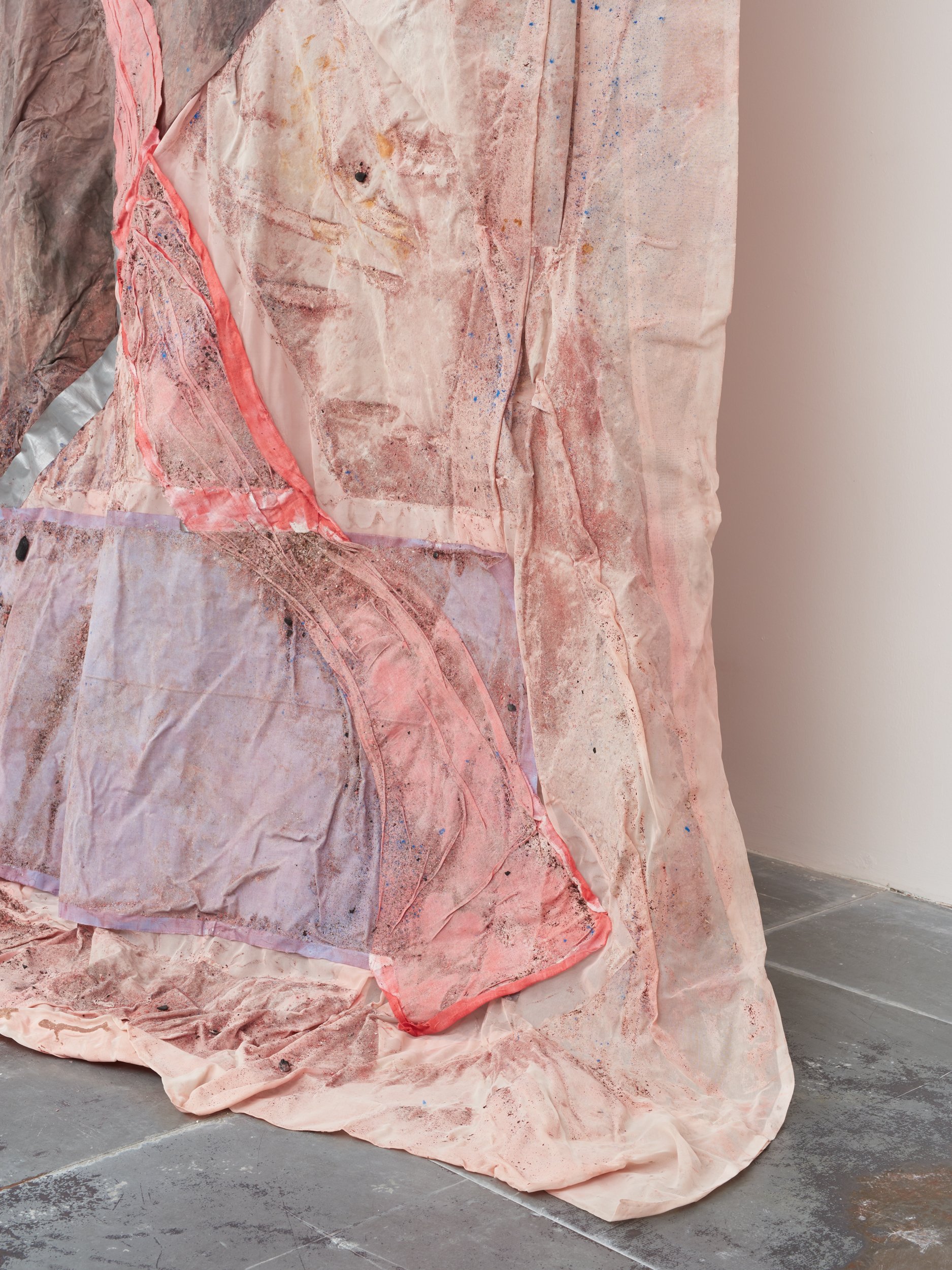
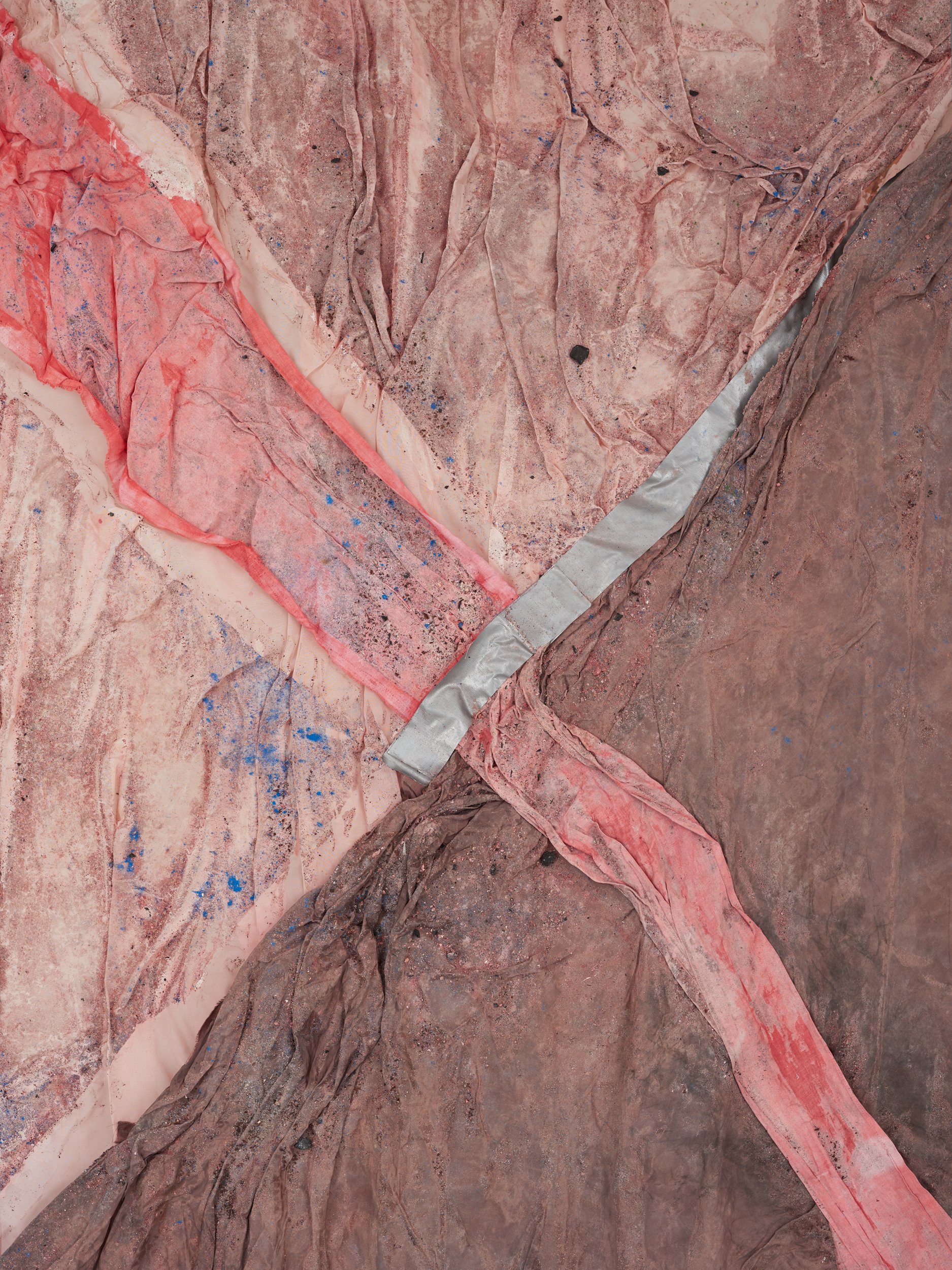
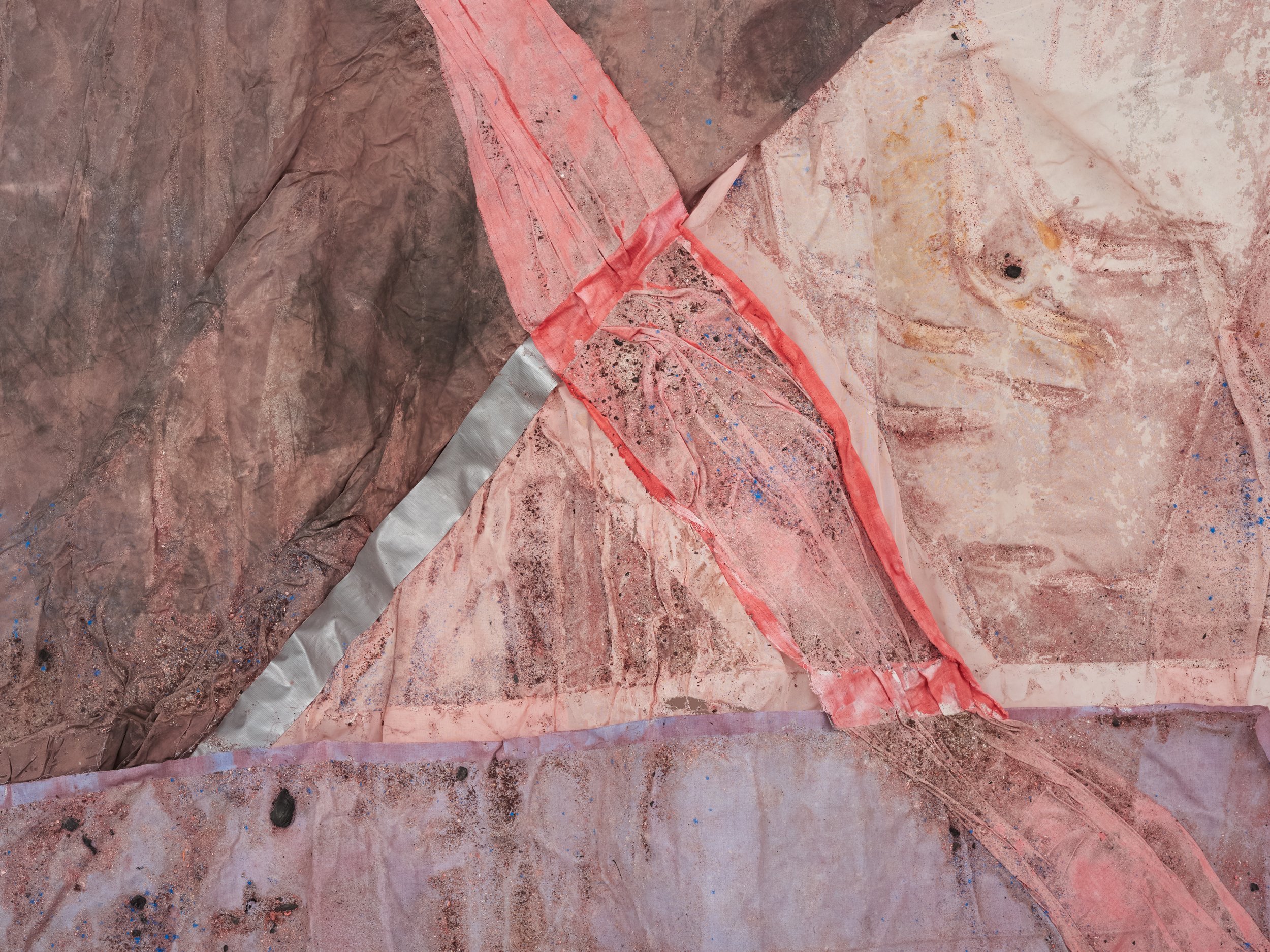
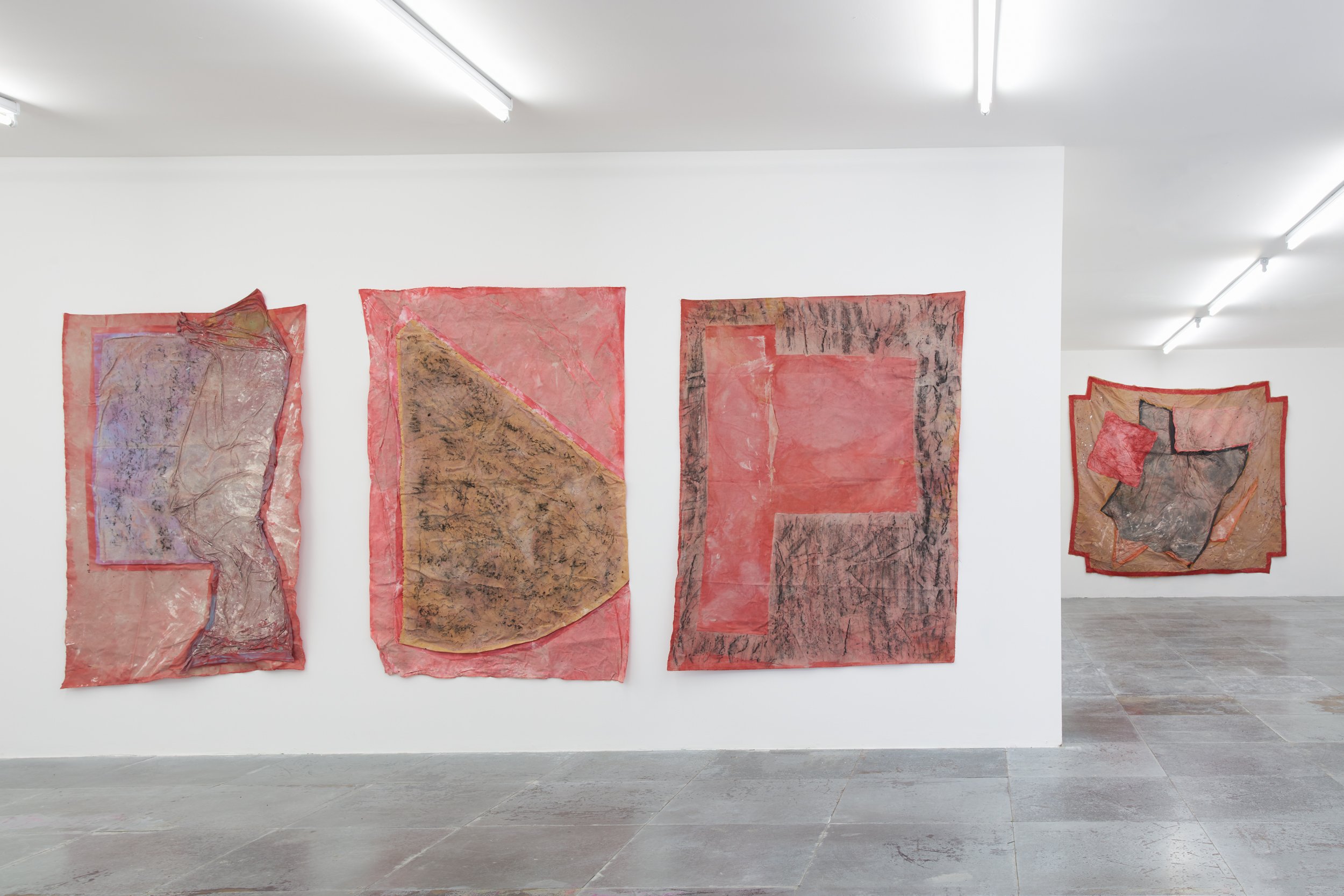
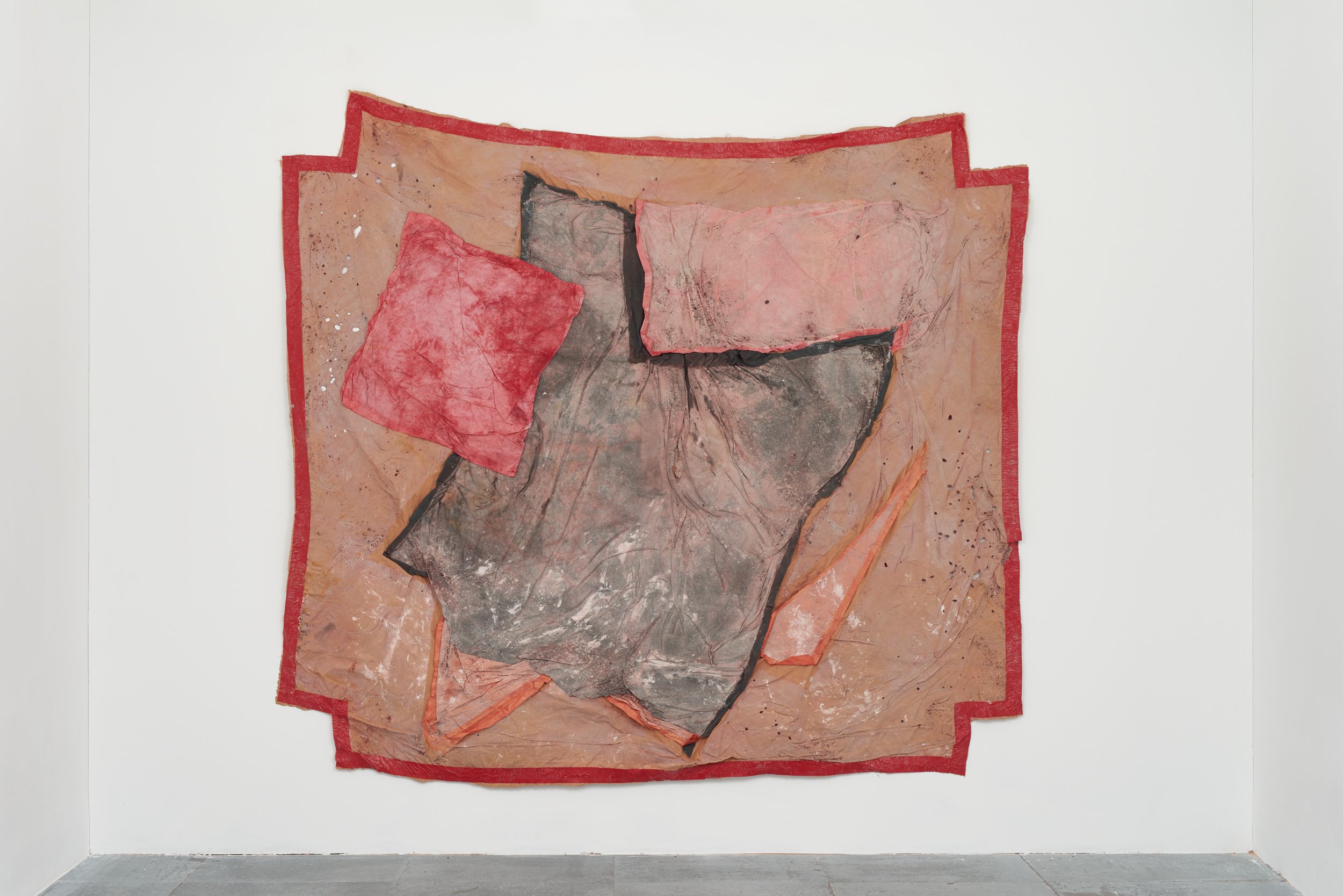
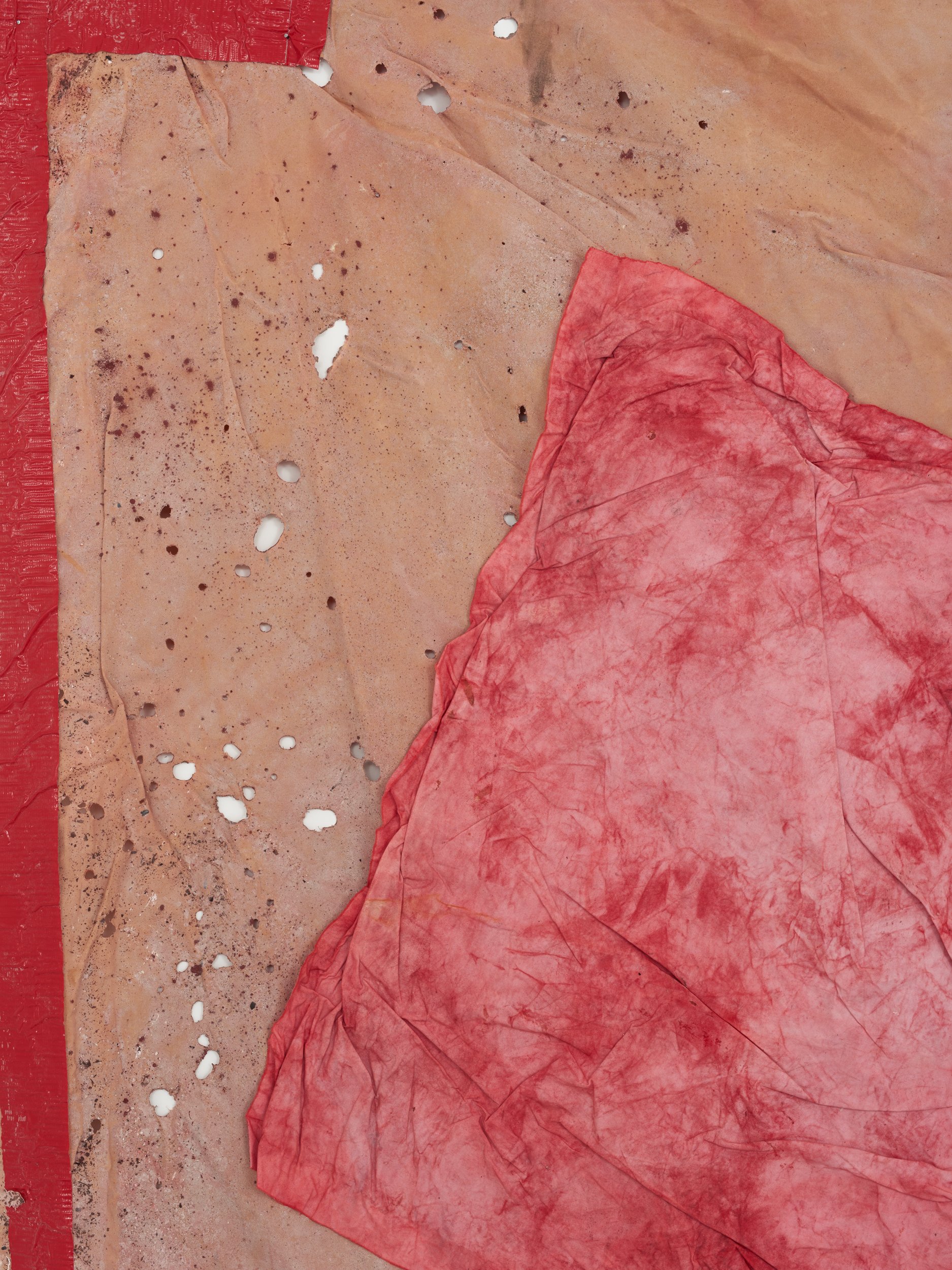
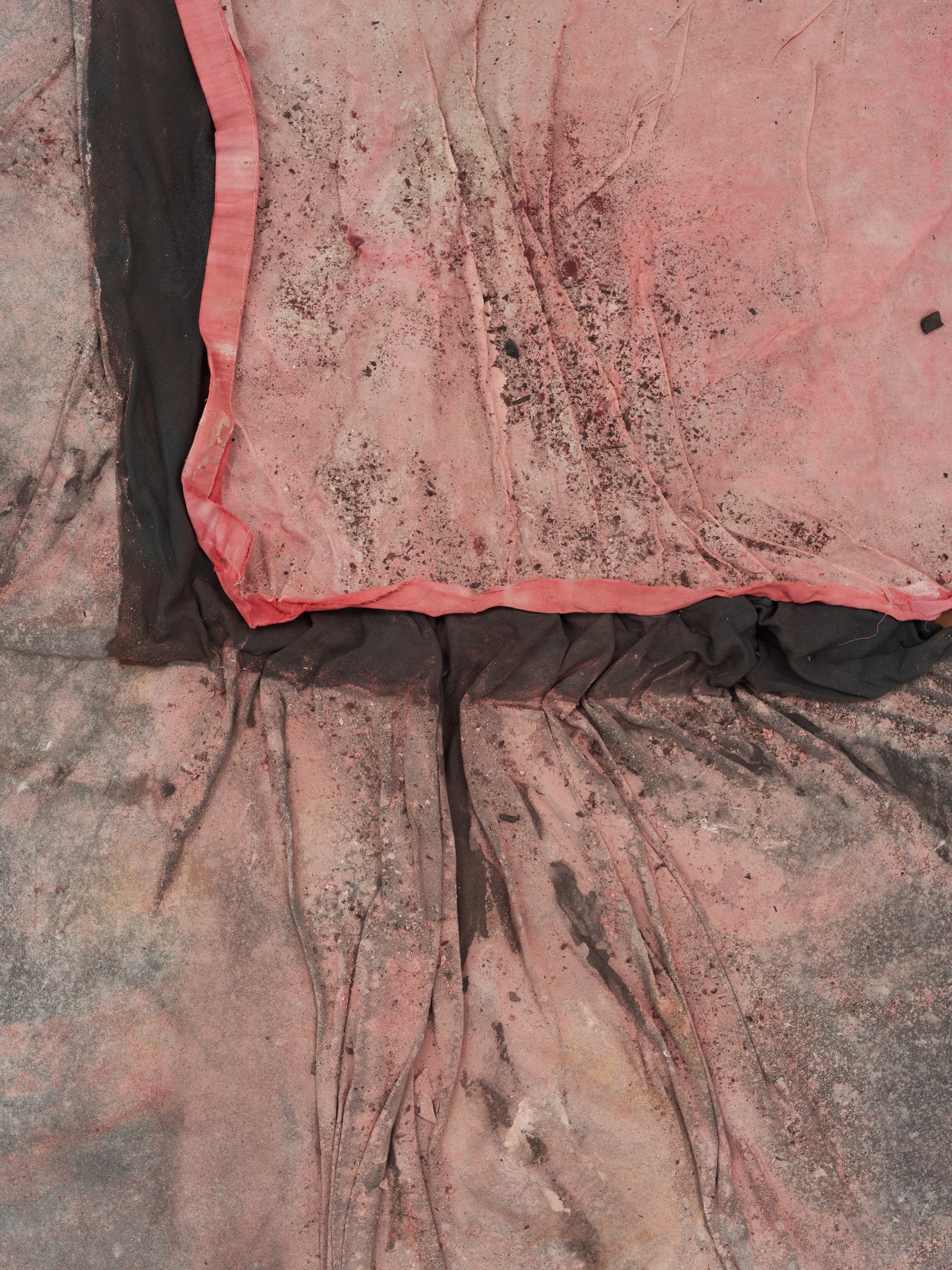
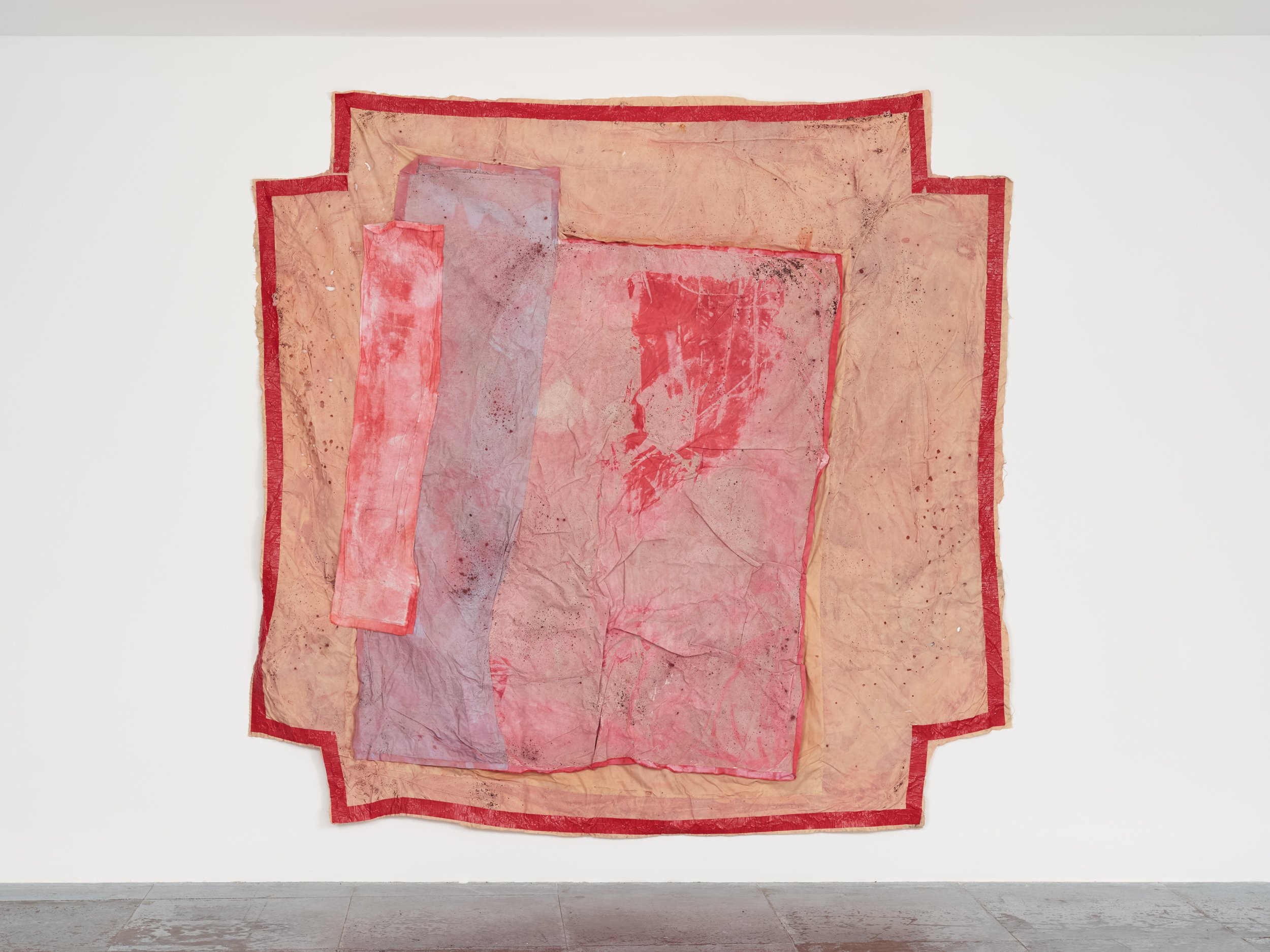
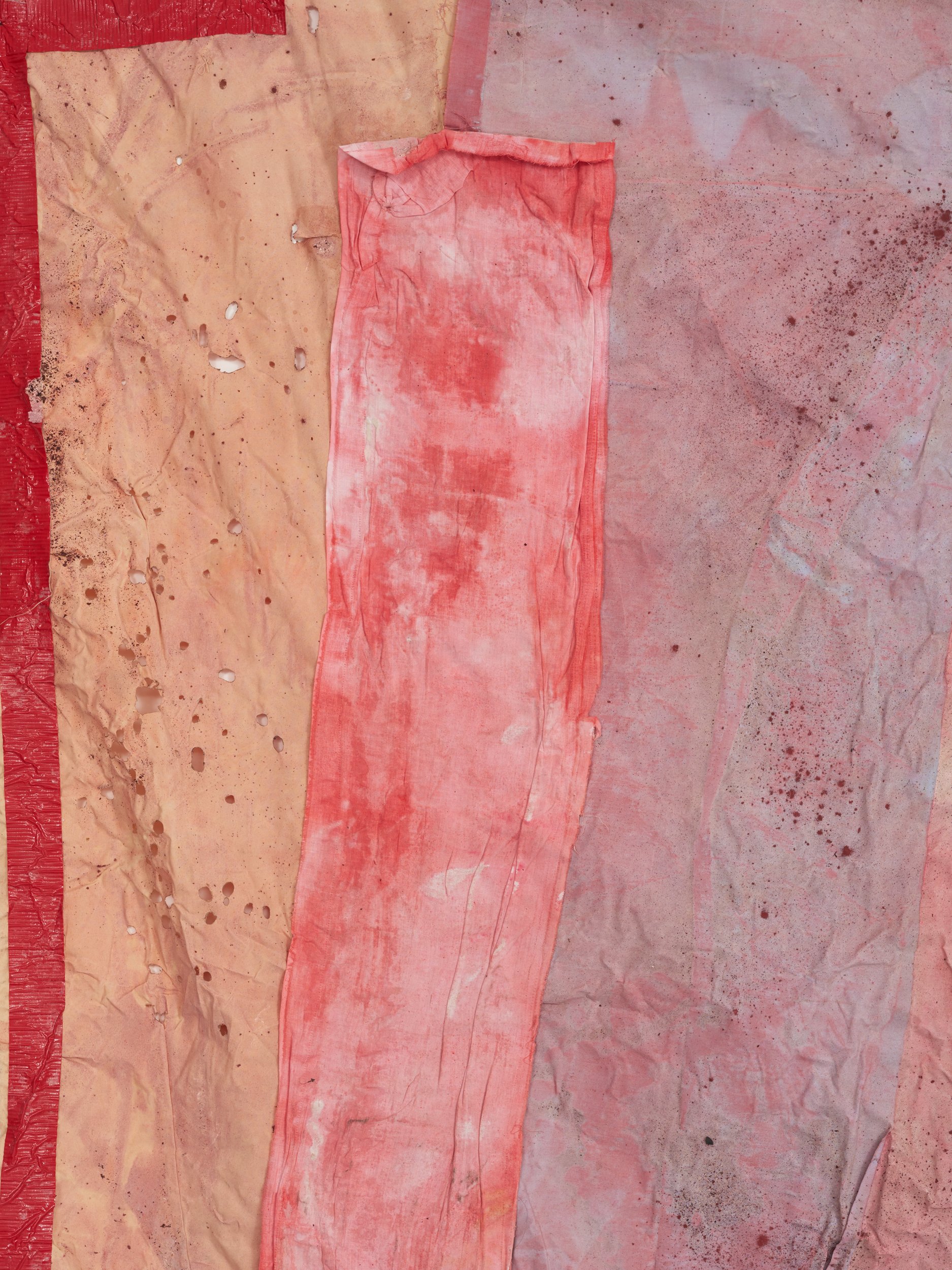

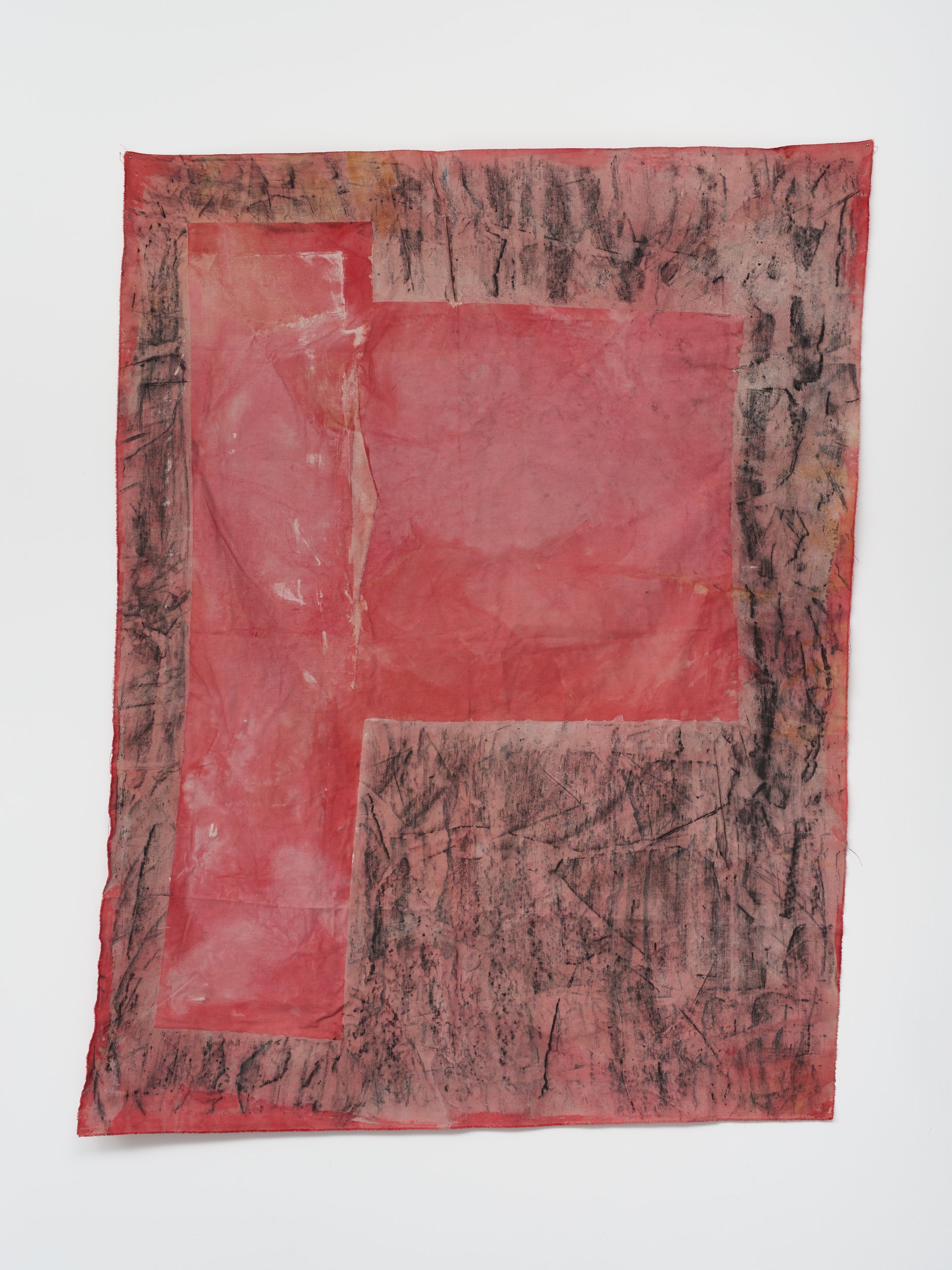
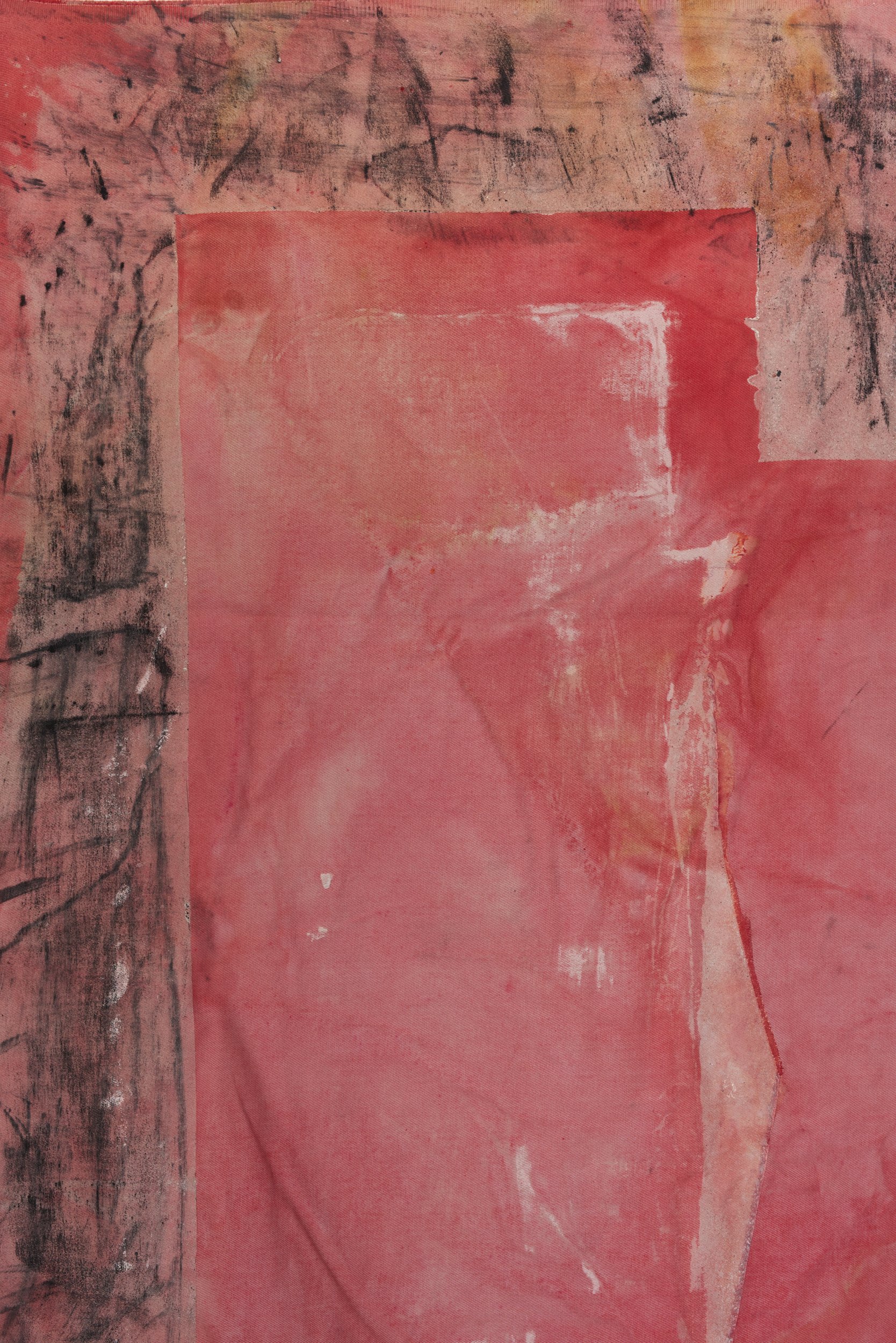

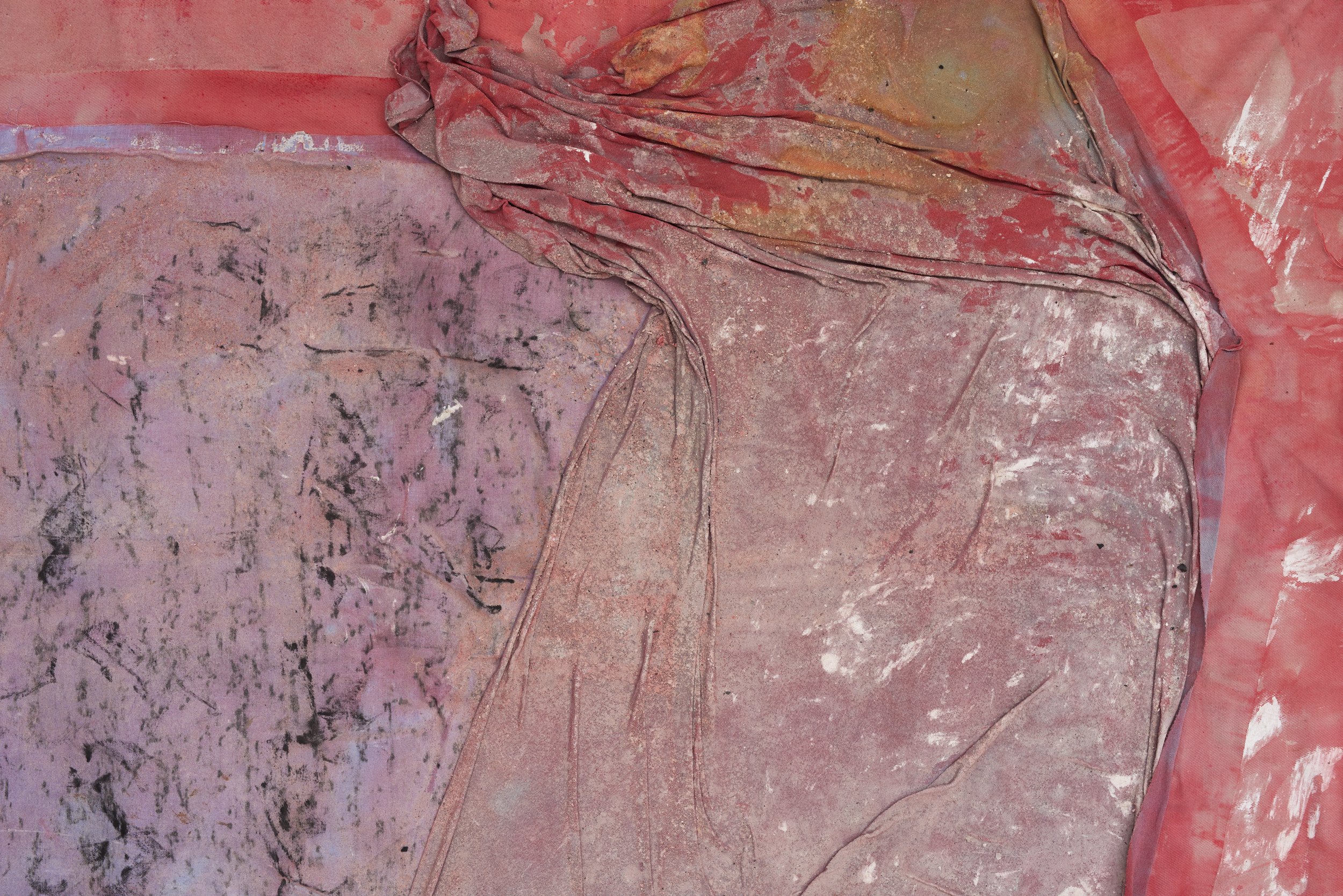
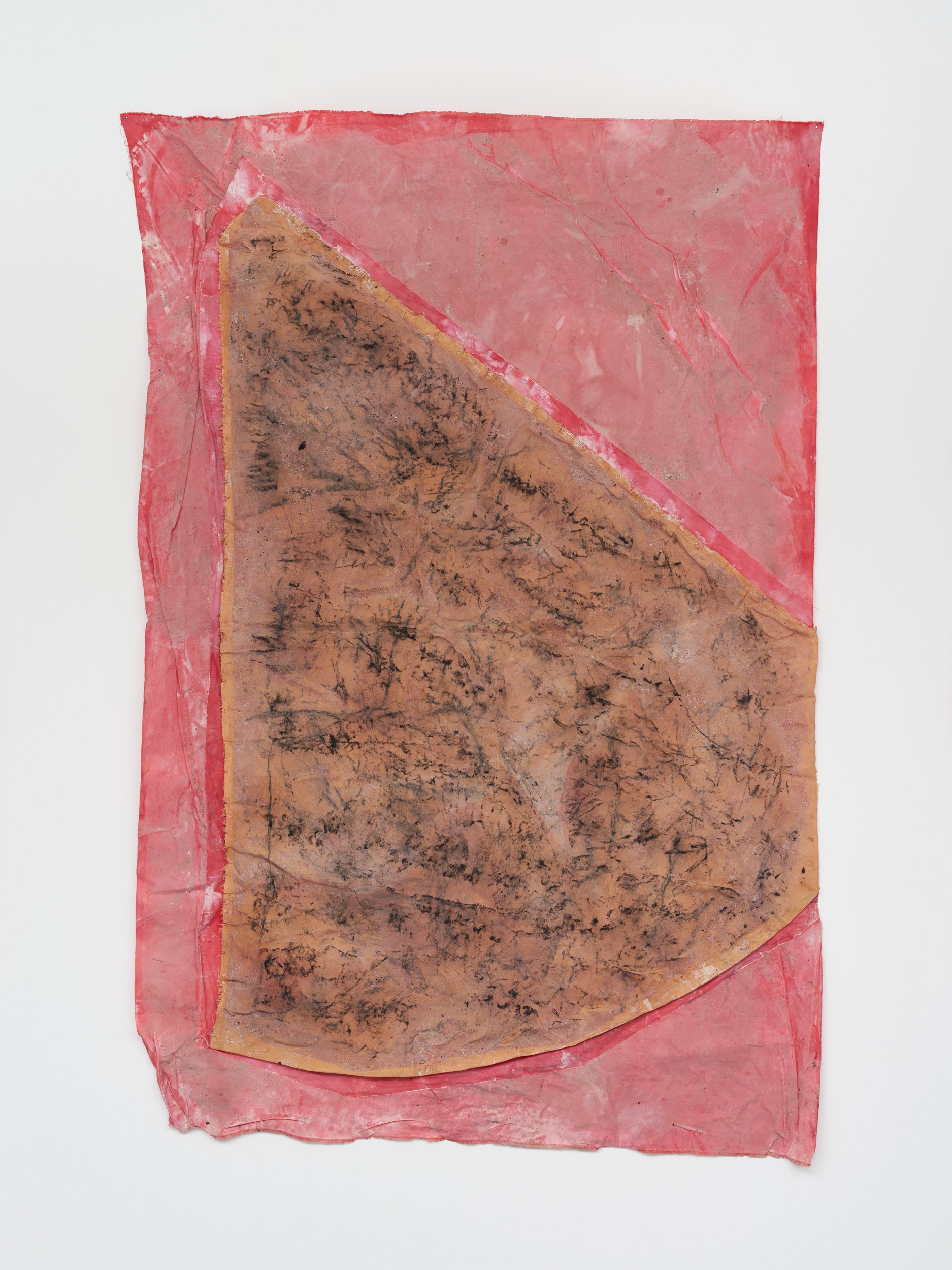
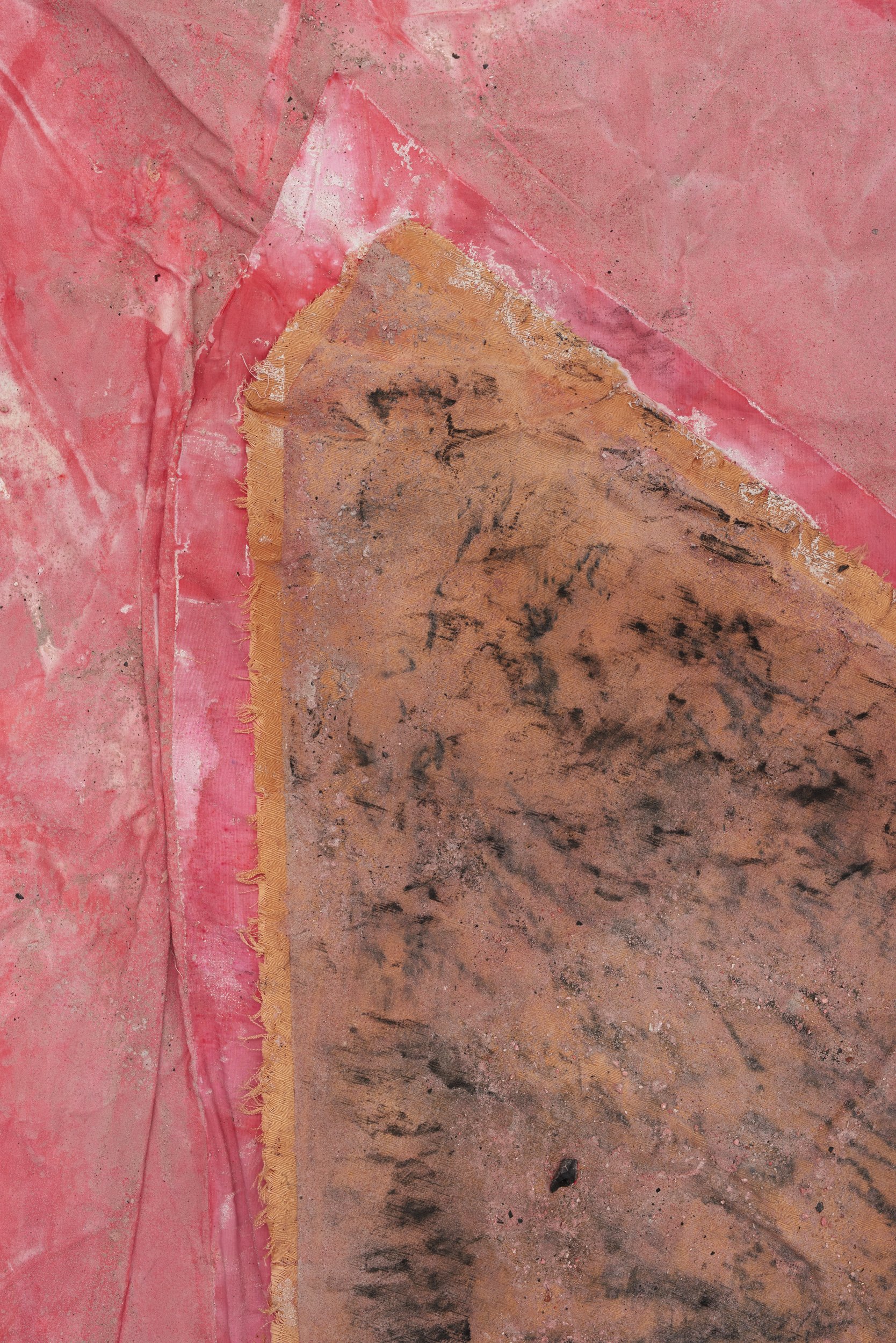
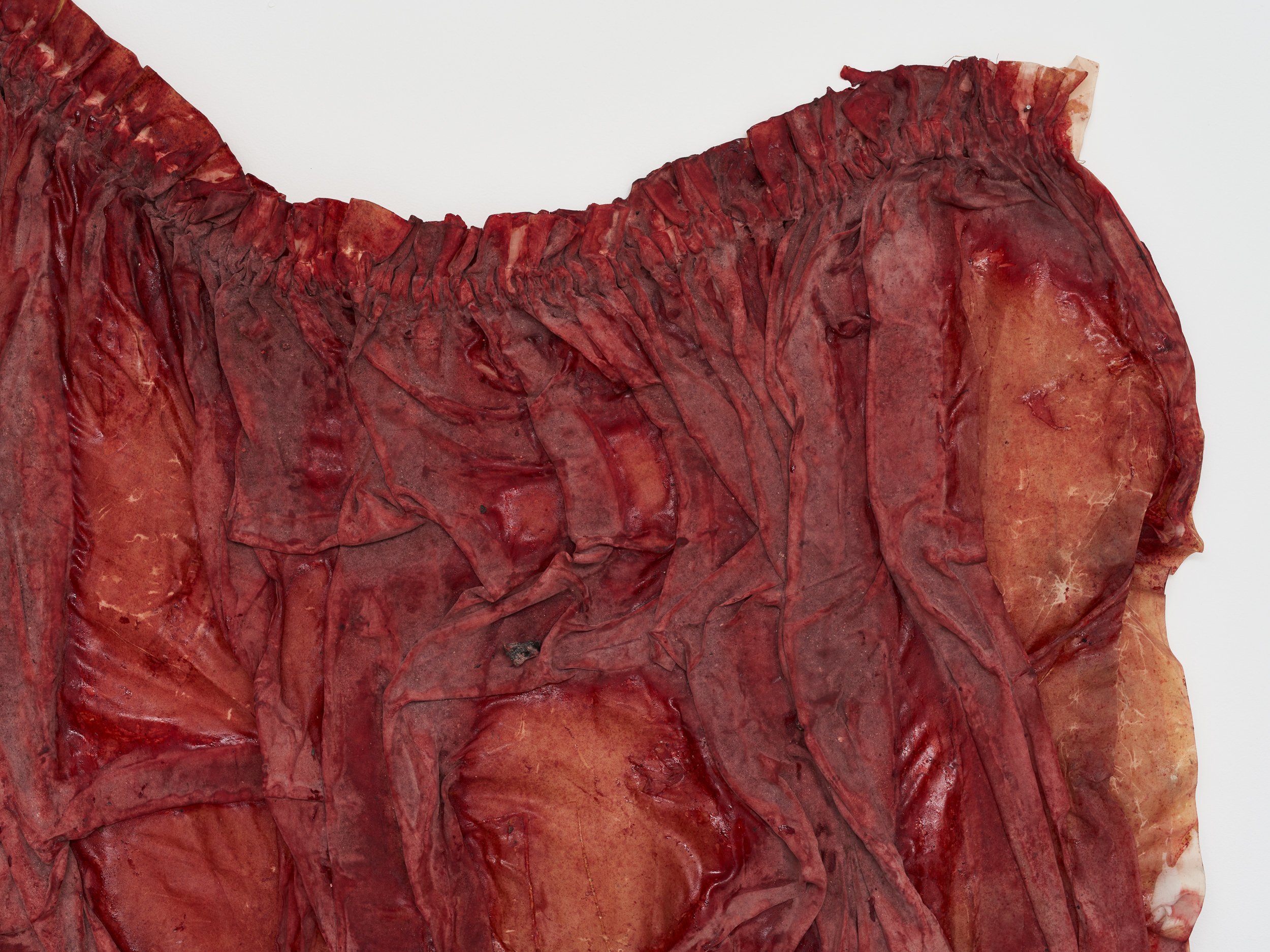
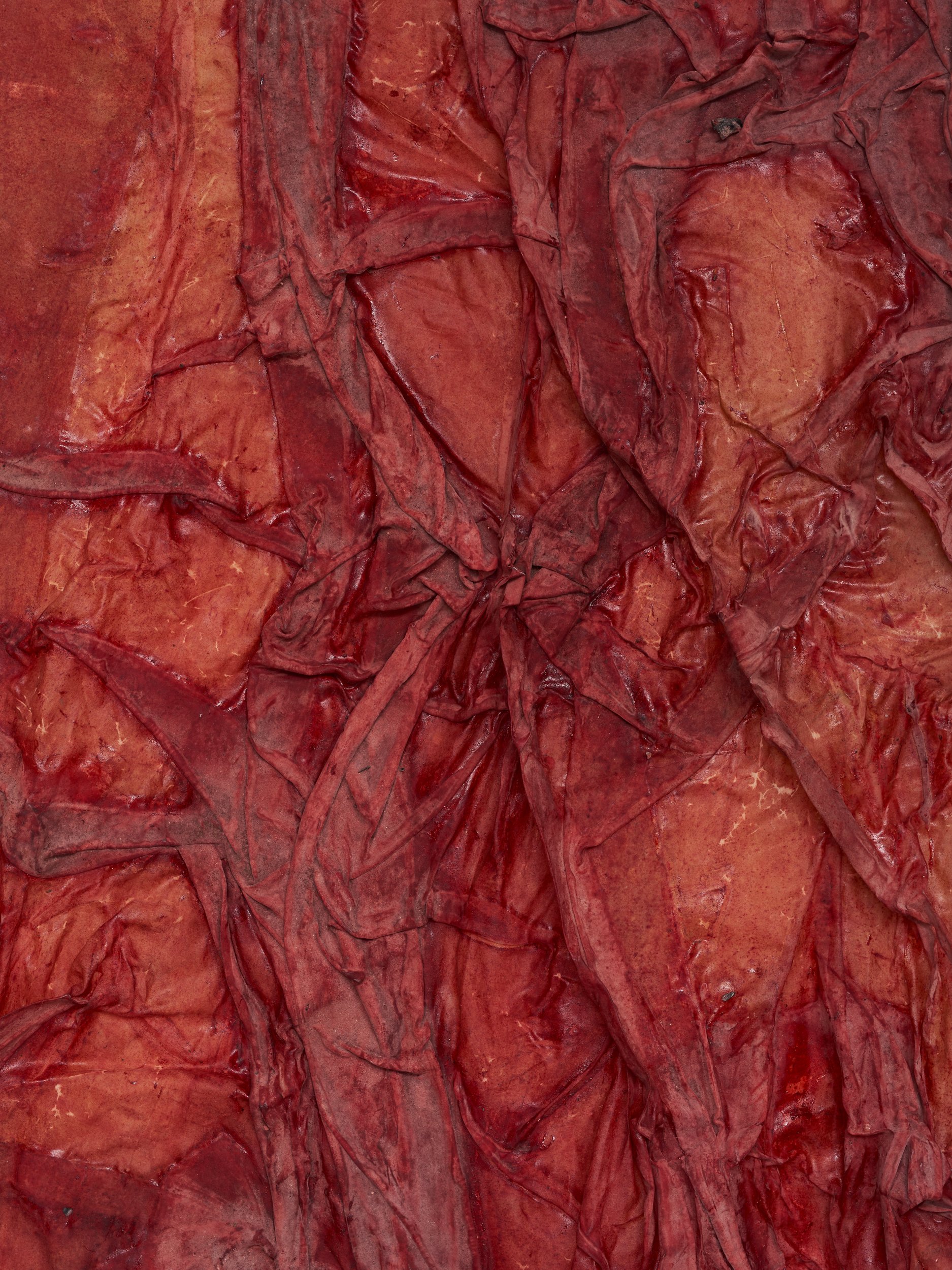
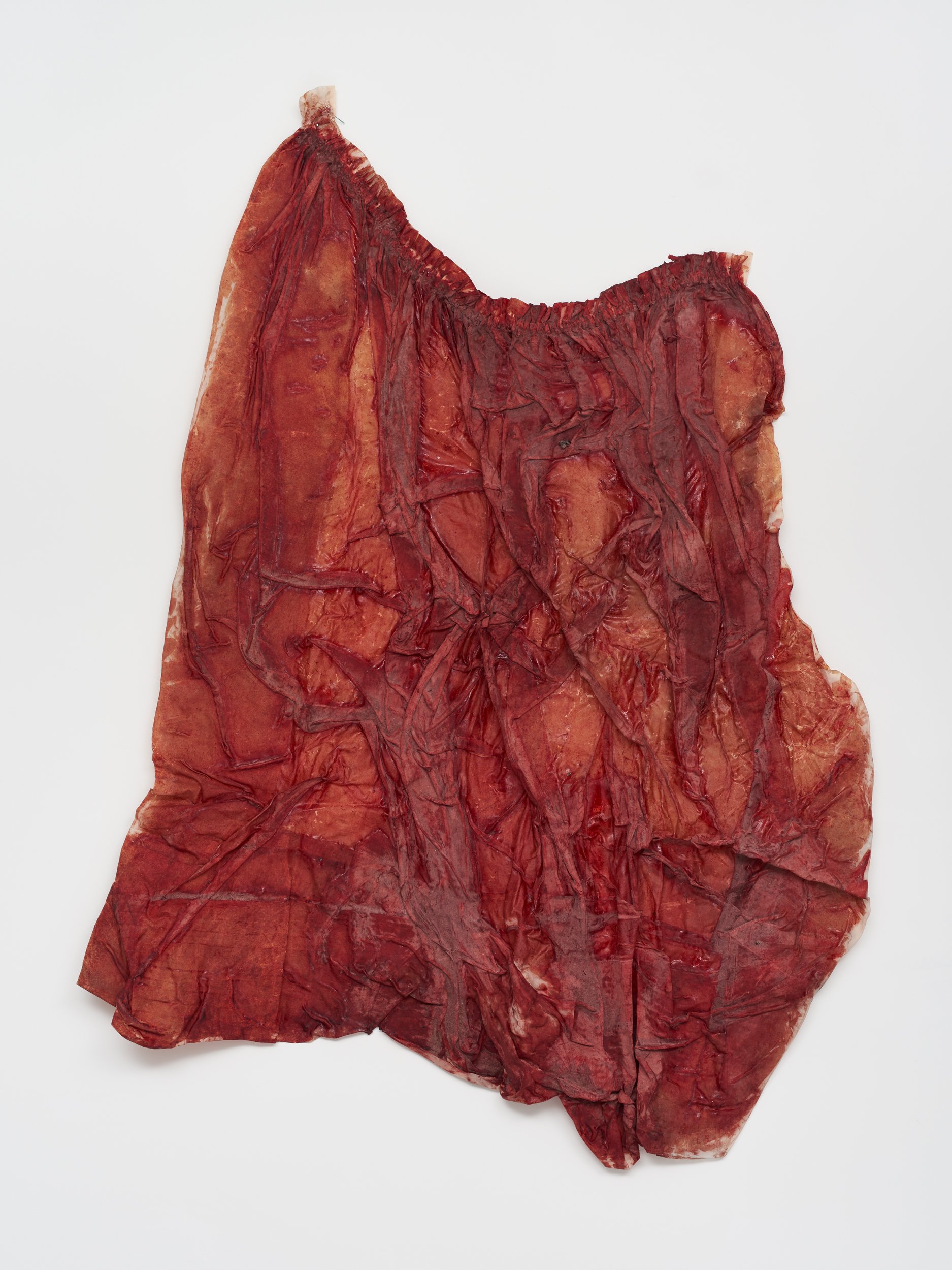
Time spent without its flow, 2022
Curated by Odessa Warren. Shown at VO curations, London, UK.
Time spent without its flow, presents works made on the land of Nasser’s family’s home, in South Lebanon. Decades of war and occupation has led to the intense militarisation and surveillance of a place which sits at the edge of a country that cannot contain it and the tip of a frontier it cannot cross. Under conditions of protracted and slow violence, Nasser’s artistic process is embedded in time that seems, in Lisa Baraitsers words, ‘frozen or unbearable in its refusal to move’. In this temporal mode, maintaining ongoing relations with others involves ‘arduous temporal practices’ of care. These acts are durational, repetitious, but ultimately allow for ‘the renewal of everyday life’.
Made over several months, Nasser pieces together her canvases using discarded fabrics – curtains, bedsheets and pillowcases sourced from her great grandparents’ home. Using charcoal, she creates etchings over flintstone terrace walls and olive trees planted two hundred years ago. Left outside, her canvases are formed by rain and wind which wash away her rubbings. By returning to create her charcoal etchings once more, Nasser gestures to the ways in which her process is involved in temporal practices of caring, tending, staying, and enduring. The materials of her works appear thin, almost fragile, their many folds bearing witness to the repetitive and durational way they were shaped, through time passed. Their pink and red hues owe their colour to the dyes she makes from drying wildflowers that grow on the land. These soft and sharp tints signal the life, both human and non-human, which these temporal practices sustain.
Nasser’s process of continually returning to her works, of repeating, remaking, undoing, and putting back together, speaks to her refusal of settling on a defined form. By producing works in suspended states of unmaking, the artist reflects her own ambivalent and diasporic attachment to South Lebanon. Situating herself in a position of unknowing, she echoes Jamaica Kincaid’s relationship to her garden. Working in, with, and through the earth thus becomes an ‘exercise in memory’, a way of coming to know her own past and the history of the land as it is indirectly related to her. In doing so, Nasser tells us that her practice is not about being inside or outside but about working in immanence, of inhabiting, tending, and caring for these materials and this territory.
Dala Nasser, Time Spent Without its Flow, Images by Theo Christellis.

